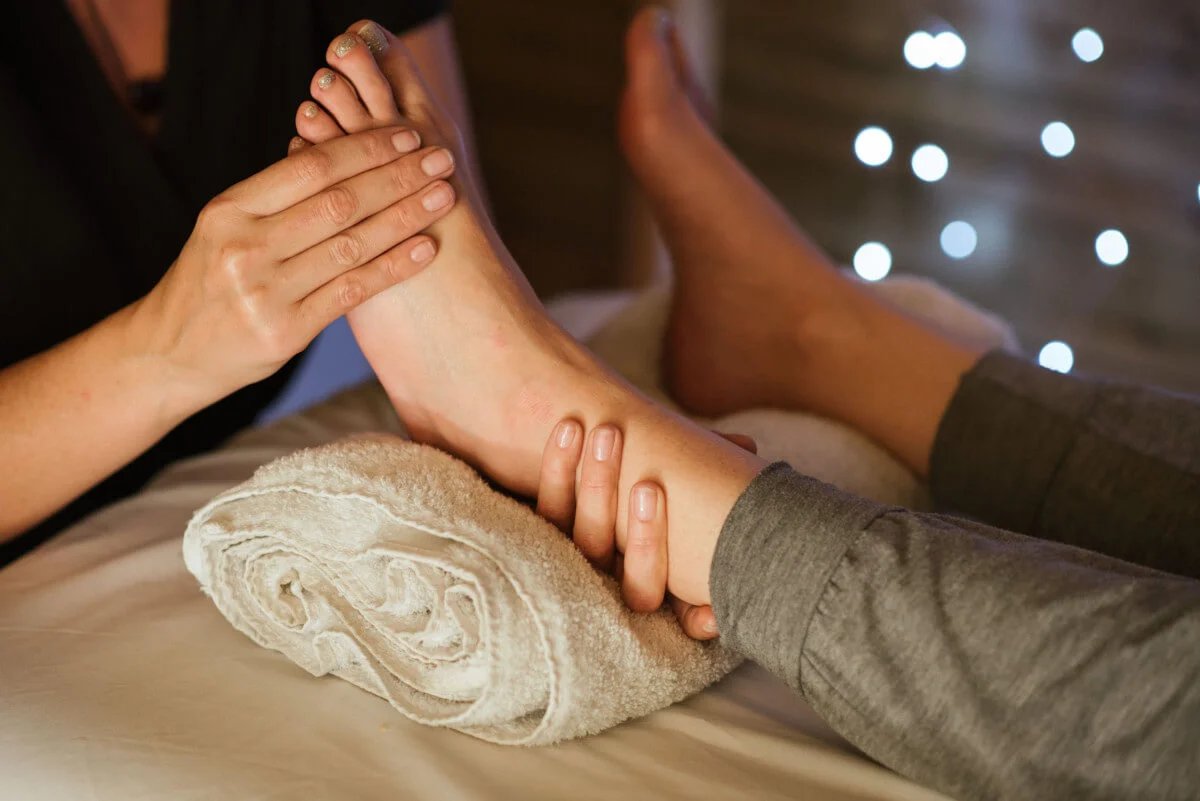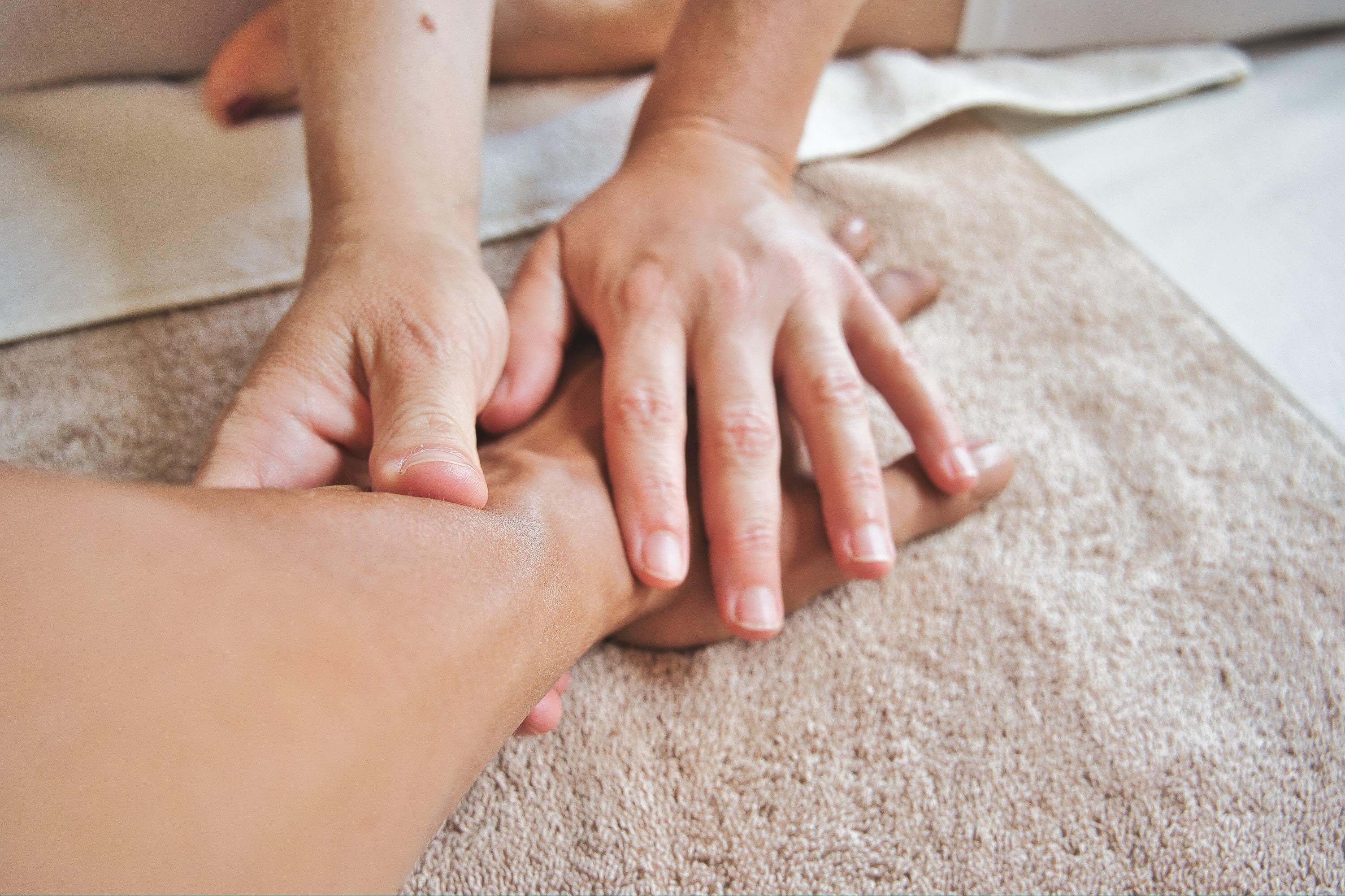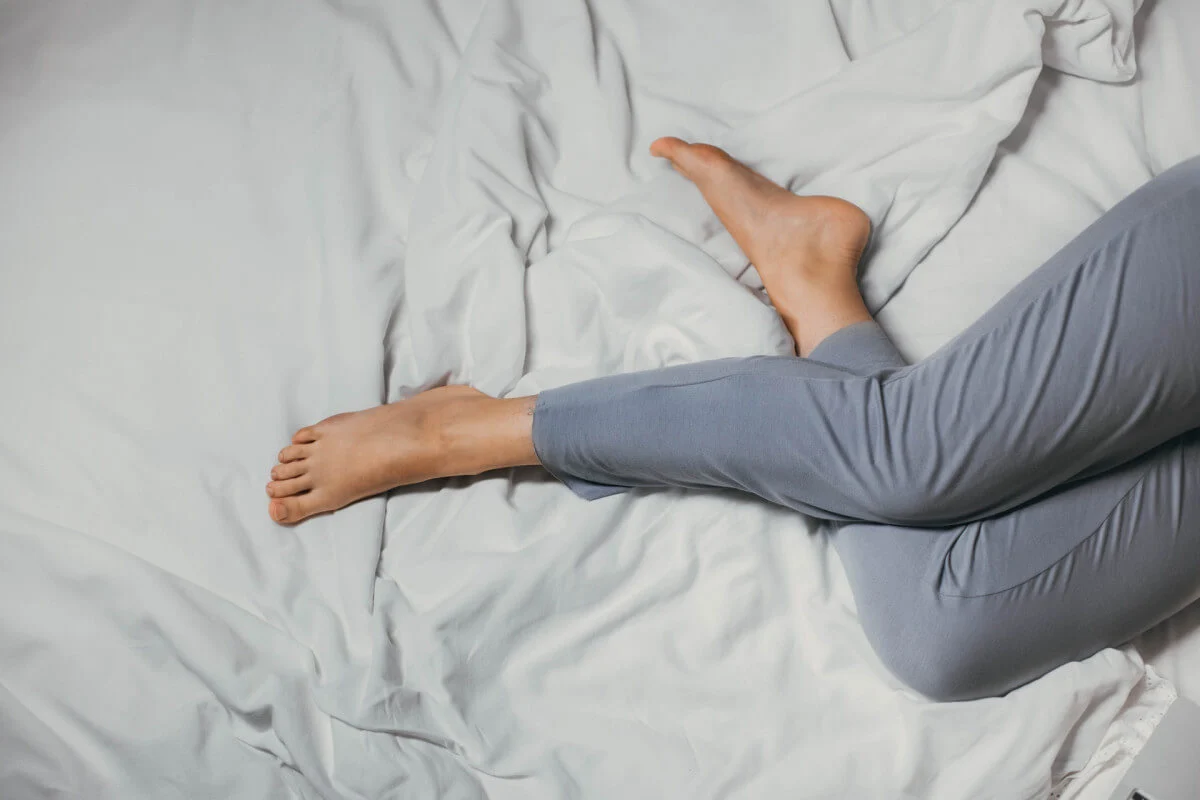After a long day, a relaxing foot massage can do wonders for aches, pains, and stress. The benefits of foot massage also include increasing circulation and boosting overall well-being — and for many people, these effects can be life-changing.
This restorative practice has countless types and techniques to choose from. But how can you know which kind is best for you? Aside from that, how can you give yourself a foot massage at home, and what are the benefits?
Below, we’ll cover everything you need to know about foot massage, including its benefits, types, and techniques to boost your feet health.
What Is a Foot Massage?
A foot massage is a form of massage therapy that can help you relax, sleep better, and live better. As the name suggests, it’s focused on your feet, although some techniques will include the calves or lower leg. They are typically done by hand, either by a professional masseuse or yourself.
Advances in therapeutic technology mean that modern massagers can help people reap the benefits of foot massage at home. Reputable brands have even built devices to mimic a masseuse’s hands while including a range of powerful setting options.
No matter which way you receive a foot massage, it can make a world of difference in your health — especially if you deal with muscle pain or circulation issues in the feet.
Types of Foot Massage
Here are some of the most well-known types of foot massage:
Foot Reflexology
Reflexology is an ancient Chinese therapy that uses pressure points to relieve tension throughout the body. Research shows that reflexology is relaxing, fatigue-fighting, and beneficial for sleep.
During a reflexology session, a masseuse will stimulate specific points in the feet that correlate with your areas of concern. Many people use this therapy to address back pain, headaches, or overall body tension.
Historically, practitioners of reflexology believe in something called zone theory. This theory centers on the idea that every piece of your body is connected to zones in the feet, hands, and ears.
Swedish Foot Massage
As a whole, Swedish massages are the most relaxing type of foot massage available. Therapists use long, soft strokes to gently relieve tension in your foot muscles, ligaments, and tendons.
This technique is best for people who want to promote whole-body relaxation and soothe their tired feet after a long day.
Deep Tissue Foot Massage
Deep tissue is a foot massage technique that vastly differs from Swedish massage.
Typically, therapists will apply high pressure in targeted areas on the feet. Rather than focusing on relaxation, people often use deep tissue massage to address pain and muscle-related injuries.
Thai Foot Massage
Thai foot massage is another form of ancient therapy that uses similar principles as reflexology. In this massage modality, a practitioner targets the energy meridians in your feet, known as “Sen” lines. They may also use certain forms of stretching and massage involving the lower legs.
Researchers have found that Thai massage increases blood flow in the feet and alleviates stress.
Hot Stone Foot Massage
This modality is a little different from other forms of massage therapy. It uses heated stones rather than a masseuse’s hands to soothe muscles and promote relaxation.
In a hot stone foot massage, you can expect the therapist to knead your feet with warm, smooth stones. They will often use the edge of the stone in circular motions to work out tension in the arch, heel, and top of the foot.
Sports Foot Massage
Contrary to what it sounds like, sports foot massage isn’t just for athletes. It can help anyone who puts a lot of stress on their feet — whether it’s from work, exercise, or sports. It’s similar to deep tissue massage but is more targeted and occasionally involves stretching.
In a sports foot massage, the therapist will typically work on relieving pain, improving range of motion, preventing future injury, or boosting muscle recovery.
What Are the Benefits of Foot Massage?
So, why foot massage? What are the benefits of including this therapy in your daily routine?
Below, find some of the best foot massage benefits and how they can improve your well-being:
1. Boosts Circulation
Relaxing pressure on your muscles can help promote blood flow to your feet. Many experts believe that this boosted blood flow happens due to the manipulation of soft tissue and your body’s natural relaxation response.
2. Improves Energy Levels
People often report feeling more energized and revitalized when receiving regular foot massages.
Better circulation means more oxygen and nutrients flowing through the lower body, which could, in turn, increase energy levels. And the research on massage and energy also supports this benefit.
One 2019 study found that foot reflexology massage helped lower fatigue in lymphoma patients. Additionally, a 2018 study found that Thai and Swedish massage as a whole can boost energy by promoting relaxation, easing stress, and relieving muscle aches.
3. Supports Relaxation and Stress Relief
A clear backed benefit of foot massage is that it relieves stress and boosts relaxation, both in your body and mind.
Whether you’re always on the go or simply find yourself stressed out often, regular foot massage can be the relaxation boost you need to feel better.
4. Promotes Healthy Sleep
The hustle and bustle of modern life can make it hard to get a good night’s sleep. If you’re like many people, you may find it challenging to fall asleep, or you frequently toss and turn throughout the night.
The good news is that practicing self-foot massage, even for as little as five minutes before bed, could help your body get more restorative sleep each night.
Intuitively, foot massage for better sleep makes sense. But the research also supports this. A 2020 study in PLOS One found that the MedMassager foot massager could significantly improve the sleep quality of patients with RLS.
5. Reduces the Feeling of Pain
Foot massage and reflexology are known for their ability to alleviate aches and pains, but do they really work?
The short answer is yes. Science shows that massage is a worthwhile option when considering holistic ways to reduce pain.
In one study, patients received foot massages after undergoing cardiac surgery. The results showed that it helped ease their pain and even reduced anxiety after surgery. Another 2020 study showed the same for ICU patients. In this instance, foot massage also helped patients lower their pain scores.
6. Improves Mood and Quality of Life
People who regularly receive foot massages report feeling more uplifted and relaxed overall. And this makes sense — after all, who doesn’t love a good massage?
However, there may also be a biological side to the mood-boosting benefits. Some research shows that massage increases serotonin and oxytocin, two feel-good compounds correlated to happiness.
Additionally, one study aimed to discover whether or not foot massage could improve levels of well-being in RLS patients. The researchers confirmed that the MedMassager foot massager played a positive role in boosting participants’ quality of life after four weeks.
So if you’ve been feeling overwhelmed or a little bit down lately, a self-foot massage may be just what you need to feel better.
7. Supports Overall Feet Health
Finally, foot massage is incredible for your overall feet health. Our feet are vital parts of our bodies that work hard every day. We use them to walk, run, and carry ourselves through life.
Regular foot massage means supporting some of the busiest, hard-working muscles you have by boosting circulation and relieving muscle tension during every session.
Foot Massage as a Complementary Therapy
While foot massage isn’t a treatment or cure for any disease, it can certainly boost a person’s quality of life in specific circumstances.
Of course, it’s important to talk to your doctor before trying a massage — especially if you’re prone to blood clotting or have another condition that won’t pair well with it.
But for many situations, massage is a wonderful complementary therapy to help alongside your doctor’s recommended treatment options.
Here are some conditions that people find massage helpful in:
Neuropathy
People with neuropathy often feel that foot massage helps reduce pain and increase blood flow to the affected areas of their bodies.
Plantar Fasciitis
Plantar fasciitis is the most notorious cause of heel pain and is especially common in runners. People with this condition sometimes describe the pain as a stabbing sensation, and it can be highly unpleasant. Common treatments include heel support in shoes, OTC pain medicine, ice, and in extreme cases, surgery.
Fortunately, foot massage may be able to help. One small 2019 study had positive results showing that massage may ease plantar fasciitis pain.
Muscle Injuries
Since foot massage can relieve pain and muscle tension, many people find it soothing for foot and ankle injuries.
If you plan to try out a massage for this purpose, be sure to talk to your doctor beforehand. Massage is helpful much of the time, but it’s best to be on the safe side. (After all, you don’t want to aggravate any injuries!)
Heel Spurs
Heel spurs often come hand-in-hand with plantar fasciitis, although they can also occur independently. These bony growths form on the front of the heel near the arch. Fortunately, massage may be able to help ease the pain and discomfort they cause.
Restless Leg Syndrome
Restless leg syndrome (RLS) is a common and uncomfortable condition that causes an unpleasant sensation, typically in the legs, that feels as though it can only be relieved through movement.
So, can massage help with restless leg syndrome (RLS)?
Surprisingly, it appears so. Scientists are consistently researching the health benefits of foot massage, and they have gathered some early evidence that it can help with symptoms of RLS and improve quality of life.
A recent study also found that a MedMassager foot massager and heat therapy may effectively reduce RLS symptoms.
At Home Self-Foot Massage Technique
Are you feeling inspired to try foot massage techniques at home? If so, we’ve got you covered.
Here are some simple step-by-step instructions to get started on the journey to better feet health:
1. Find somewhere comfortable to relax.
You’ll want to have easy access to your feet when you’re self-massaging. So, find a position that feels comfortable for you. Many people enjoy sitting with one leg crossed over their opposite thigh to easily access their foot.
After getting comfortable, apply massage oil or lotion from the foot up to the ankle.
2. Start with gentle strokes.
Starting at your heel and moving up to the toes, use your thumbs to gently rub your foot. Many people enjoy using circular or side-to-side motions here.
Make your way across the foot for a few minutes, taking time to focus on parts that need it most. If you find that an area of your foot is very tender, you can work around that section instead of directly on it.
3. Use your knuckles to work out muscle tension.
You can use your knuckles to deeply work through the muscle tension in the bottom of the foot. Holding your foot in place with one hand, use your opposite hand’s knuckles to knead in a circular motion at medium pressure.
4. Don’t forget your toes!
Be sure not to overlook your toes. Apply pressure to each toe in a squeezing motion. Then, use your hand to lift and stretch each toe.
5. Use your thumbs to release tension in the arch.
After stretching your toes, spend some time working on the arch of your foot.
Use your thumbs in a circular motion at a pressure that feels most comfortable to you. Alternatively, you can use the twist technique, where you use both hands to rub each side of your foot in a gentle, twisting motion.
6. Apply pressure lengthwise, from heel to toe.
Using your thumb, apply pressure at the base of your heel and glide up to the top of your foot. This helps warm up the tissue surrounding the heel and break up tension along the muscles in the middle of the feet.
How Long Should a Foot Massage Last?
Typical foot massages in a therapist’s office or spa will range from 30 to 60 minutes. But in general, there’s not a timeframe that works for everyone. It simply depends on your feet and whether or not you have medical conditions affecting the area.
At home, you can give yourself a foot massage for as little as five minutes and still feel benefits. If you’re using a foot massager, you should check the manual for specific time limits.
How Often Should You Get a Foot Massage?
This also depends on each person. A few times a week is often enough to feel relief, but it ultimately depends on your feet and the results you’re hoping to see.
Should Foot Massage Be Painful?
If you’ve ever felt yourself wincing in pain during a massage, you’re not alone. Foot massage can sometimes be uncomfortable, especially when the muscles, tendons, and ligaments in your feet are extra tight.
However, a majority of massage therapists agree that massage should not hurt. Certain types of massage may be slightly uncomfortable at times, but they shouldn’t be outright painful.
If you find that your foot massage is bringing you more pain than comfort and relief, dial down the pressure a little — whether that means asking your therapist to lighten their technique, turning down your foot massager’s settings, or trying a gentle self-massage.
Are Foot Massagers Worth It?
Electronic foot massagers are one way to experience the wellness-boosting benefits of a foot rub at home. If you’re looking to relax, almost any device will do the trick. But when it comes to overall feet health, certain products are better than others.
For example, simple vibrational massagers are great, but more advanced devices can help you target specific issues. For most people with foot-related concerns, a high-quality massager is well worth it.
One valuable option is the MedMassager Foot Massager Plus, a device that uses soothing, circular rotations to provide thorough relief to your feet. It was designed using therapeutic technology and is trusted by physicians, offering 11 speeds up to 4,000 RPM — so you can customize your experience to suit your needs.
What About a Massage Ball?
Sometimes, keeping it simple is the best way to go. If you want a no-nonsense, easy-to-implement foot massage routine, rolling out your muscles with a massage or tennis ball is a perfect choice.
The Takeaway on Foot Massage Benefits, Types, and Techniques
Foot massage therapy has been around for thousands of years and continues to bring health benefits to those who use it. Although there are tons of styles and techniques to choose from, all of them offer wellness-boosting properties that can soothe your tired, achy feet.
This restorative practice can be used as a complementary therapy for certain conditions and offers whole-body health benefits, including:
- Better sleep and energy levels
- More relaxation and better mood
- Alleviating muscle tension and aches
You can reap these benefits using the self-massage technique covered above, visiting a spa, or trying a high-quality foot massager.
If you’re interested in self-massage devices to boost your well-being, click here to check out MedMassager’s range of FDA-certified medical massagers today. Or, visit this page to learn more about how you can use a foot massager for better feet health.



